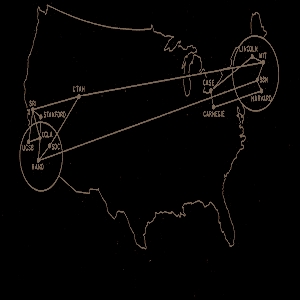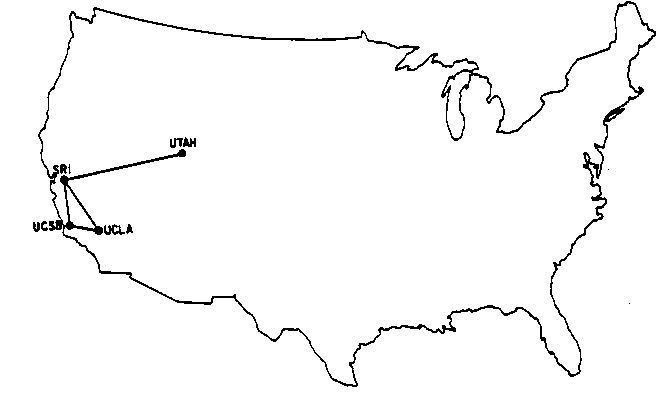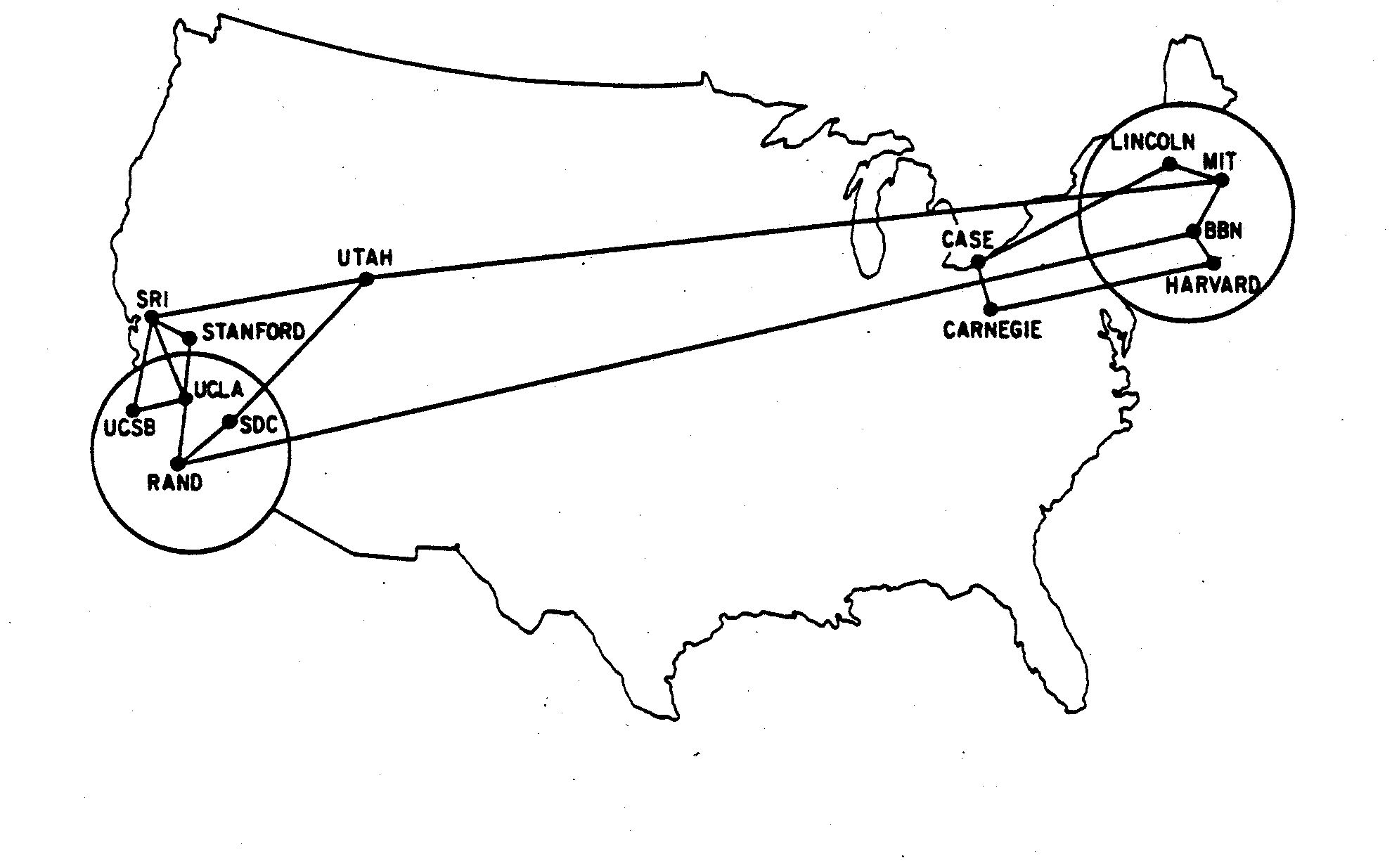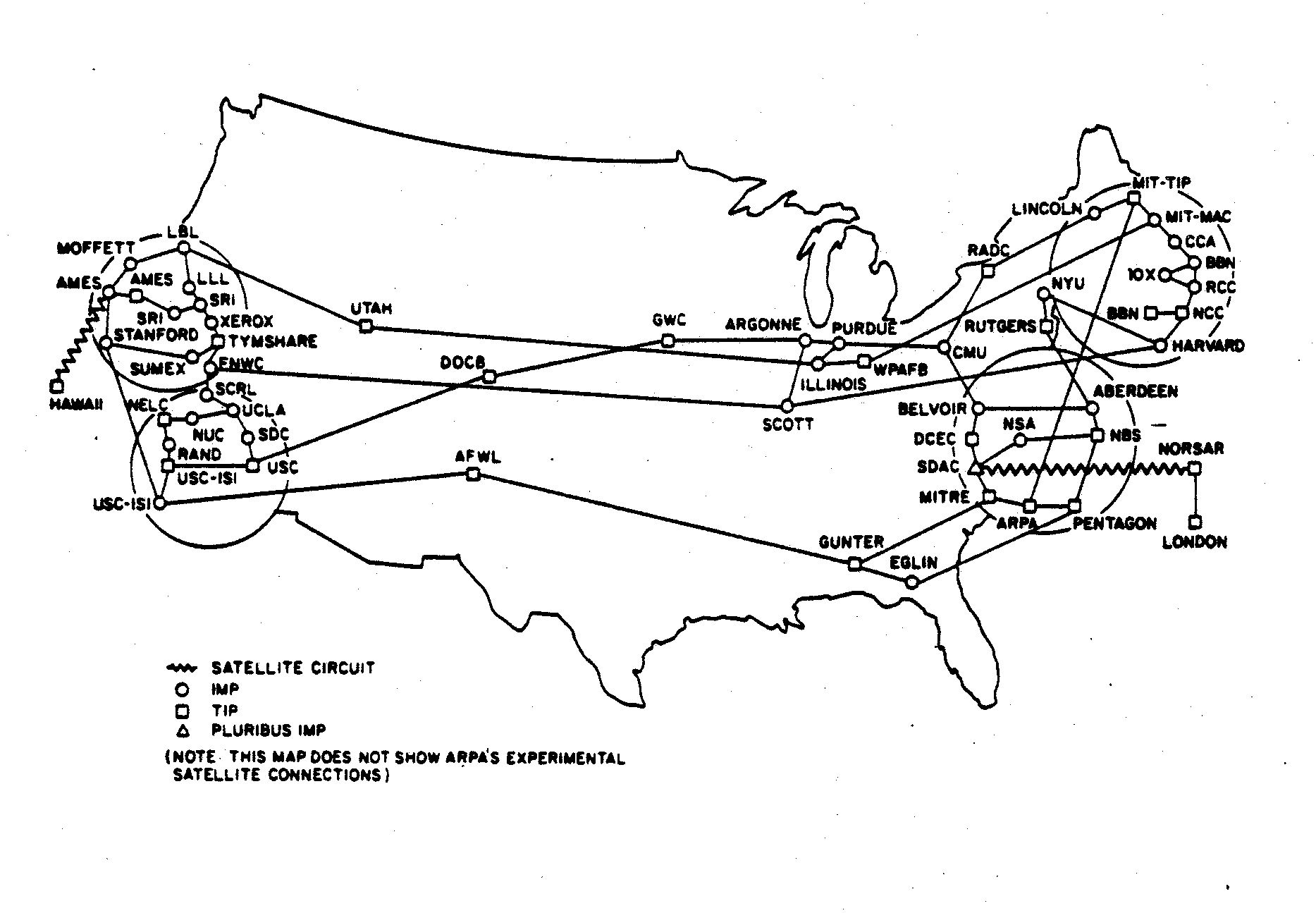OVERVIEW:
 About 10 years after Sputnik was launched, NASA had grown very popular because of missions like Apollo 11 in 1969 (when we put a man on the moon) and Apollo 13 in 1970 (when our astronauts got stuck in space for a few days). But if you remember anything about that little research group called ARPA, it wasn’t just NASA who had something up their sleeve. NASA was a big deal, but ARPA quietly worked on something else that was about to change the world forever.
About 10 years after Sputnik was launched, NASA had grown very popular because of missions like Apollo 11 in 1969 (when we put a man on the moon) and Apollo 13 in 1970 (when our astronauts got stuck in space for a few days). But if you remember anything about that little research group called ARPA, it wasn’t just NASA who had something up their sleeve. NASA was a big deal, but ARPA quietly worked on something else that was about to change the world forever.
As you know, ARPA spent a lot of time thinking about and studying communication. In the beginning, they thought about how human beings communicate naturally, but then they had to figure out how to apply that type of communication to computers. Over time, they built a network of connected computers known as the ARPANET.
During this lesson, you will learn about the history of the ARPANET project, which colleges and universities were the first to connect, and how ARPANET eventually led to what we now know as the Internet.
LEARNING GOAL #1: The Basics of Web History
Students will understand how the Internet evolved from a classified government research project into a world wide resource with the help of highly educated teachers and students.
PART 1: CLASS DISCUSSION
Read MoreTopic #1 – What Ever Happened to ARPA?
For nearly 10 years after the Sputnik Launch, ARPA had almost been forgotten. When it came to technology, everyone thought about NASA and our race to put a man on the moon. But in 1967, after a decade of looking at ideas, ARPA received $500,000 to start their first major classified project. That’s a LOT less money than they had before, but at least it was something. They called their classified project the ARPA Network, or ARPANET for short. Remember that a network is the connection of two or more computers and ARPA was practically the only group on the planet who saw this as being important enough to invest time and money.
Since this was a classified project, only four kinds of people were allowed to know about it:
- Specific teachers/professors from the best schools in the country
- A handful of engineering students from those best schools
- Certain government employees who needed to know
- Certain military officials who were allowed to know
Aside from that, ARPANET was classified and the rest of the world had no idea that ARPA even existed, let alone knowing that it was working on improving communication with technology. ARPA was trying to make it so that people could communicate through computers. But this had NEVER been done before.
Topic #2 – The First ARPANET Connection
After two years of working on their network project, there were only four schools connected to ARPANET. Three schools in California and one in Utah.
- Stanford University near San Francisco (SRI)
- University of California in Santa Barbara (UCSB)
- University of California in Los Angeles (UCLA)
- University of Utah (Utah)
…The ARPANET in 1968…

 Topic #3 – The First ARPANET Communication
Topic #3 – The First ARPANET Communication
Today, when you think of going online, you barely have to try. You’re practically online 24/7. But you’re about to see what it looked like the very first time someone went online.
One of the teachers at Stanford SRI went “online” for the first time in 1968 to share an invention that he had built with part of his research team. He wanted other teachers and other students to see this great new device called a computer mouse. Prepare yourself for one of the very first “online” videos here (Clip #2 and #3 to start).
Topic #4 – The ARPANET Spreads
Two years later, ARPANET had 15 schools connected and the map looked like this…

Six years later, ARPANET was reaching most of the major colleges and universities in the United States. It was even reaching some of the military bases around the country. So in 1976, it looked more like this…

DISCUSSION QUESTION: Why would schools and military bases be connecting to ARPANET and not everyone on their personal computers?
Topic #5 – The Guy In Charge
 Connecting to ARPANET wasn’t as easy as just plugging a computer in and turning it on. The network had to have rules or it wouldn’t work. These rules, if you remember, were known as protocols. And during the years that ARPA was building their network, every time they noticed glitches and problems, they kept setting up more new protocols. To solve some of these problems and find new solutions, ARPA hired a teacher from Stanford by the name of Vinton Cerf. He was the one in charge of all the new protocols for ARPANET. He had been a student at UCLA when ARPANET first came alive in 1968, so he knew it very well and he also knew its flaws.
Connecting to ARPANET wasn’t as easy as just plugging a computer in and turning it on. The network had to have rules or it wouldn’t work. These rules, if you remember, were known as protocols. And during the years that ARPA was building their network, every time they noticed glitches and problems, they kept setting up more new protocols. To solve some of these problems and find new solutions, ARPA hired a teacher from Stanford by the name of Vinton Cerf. He was the one in charge of all the new protocols for ARPANET. He had been a student at UCLA when ARPANET first came alive in 1968, so he knew it very well and he also knew its flaws.
So let’s pretend that you and your team are inside the mind of Vinton Cerf. You were in the room at UCLA when that display video came through from Stanford SRI. You are excited about the potential that this technology has for changing the world and making it easier to communicate, but you’re concerned. ARPA has been talking about adding more schools and more computers to the ARPANET, but you believe that adding more computers to the network will create some serious problems unless ARPA sets up a few rules, or protocols. They just hired you to be in charge. What kinds of protocols would you come up with to make it easier for a lot more computers to successfully connect and communicate with each other?
Topic #6 – The Two Most Important Protocols: TCP/IP
 Any file with any information in it takes up space. If you have an iPhone, then you probably run into this all the time because Apple insists that you make more room for other files. But back in the 1970s, Vinton Cerf had to figure out the best way to deal with these files, especially the ones that were really big, so that they could make it from one location, or computer, to another. So he set up two rules, or protocols for the ARPANET to work.
Any file with any information in it takes up space. If you have an iPhone, then you probably run into this all the time because Apple insists that you make more room for other files. But back in the 1970s, Vinton Cerf had to figure out the best way to deal with these files, especially the ones that were really big, so that they could make it from one location, or computer, to another. So he set up two rules, or protocols for the ARPANET to work.
Protocol #1 – Transmission Control Protocol (TCP)
Vinton Cerf realized that if a bunch of files were going to be shared across multiple computers, then the bigger files would need to be broken up or they would never make it. Imagine if we had a day to switch all the tables and chairs and computers between two classrooms. All of the items in each classroom would have to be taken apart and then eventually put back together.
When you break up a big file, the pieces are referred to as packets. And all those packets have to be put back together in a process that still exists today known as the Transmission Control Protocol. The Transmission Control Protocol (TCP) was a rule that instructed the network to break up large amounts of information into smaller packets of information, send them to a single destination, and put them back together in the correct order or sequence.
Protocol #2 – Internetwork Protocol (IP)
In order for the TCP or Transmission Control Protocol to work, all of the packets in a file need a clear destination. Sort of like an address. If you try to send information across a network, but that information doesn’t know where to go, then it will never get anywhere. The Internetwork Protocol (IP) was a rule that said every computer, or server, needed an address, or a location number. That’s why sometimes you hear people talk about a computer having an IP Address.
Topic #7 – From ARPANET to the Internet
Around the time that Vinton Cerf was meeting with his researchers to come up with rules and protocols for ARPANET, the Department of Defense was put in charge of ARPA, which meant that the organization had to change its name from ARPA to DARPA (Defense). But no one was going to suddenly change ARPANET to DARPANET because, well, that just sounded silly.
After the Internetwork Protocol was set up a few years later, it was common to hear people say that they were “connected to the Internet” because of an IP Address. And by 1980, even the engineers who had built ARPANET were telling other researchers to just call this big network of computers the Internet. With that, ARPANET was dead and the Internet was alive. Below is a really fast review of what we just talked about with a few extra pieces of information.
Topic #8 – About NET Neutrality
PART 2: CLASS ACTIVITIES
Read MoreActivity #1 – Breaking Down Files
The goal of this activity is for all students to understand how small a file can actually be. Open up a new Notepad document and save it as “filesize.txt” in your “msc” folder, then follow the teacher’s instructions.
Activity #2 – A Sequence of Events
Imagine that you texted your friend a message that said, “Meet Me at 3 by the Front Office,” but when it arrived on your friend’s phone, it said, “Me 3 Front at the Office by Meet.” Do you think your friend might get a little bit confused? Everything would be out of order. Just think about how frustrating auto-correct can be from time to time. If your text says the wrong thing, your friend on the other end might think you mean something different than what you actually wanted to say.
The reason the Internet is successful is because it can take information from one location (even if that information is really big, like images, videos, or large text files) and move that information to another location. The way it does this is to break down large information files into smaller file packets, and then put it all back together in the correct order by the time it arrives at its destination on another computer or device.
The Internet has rules, or protocols, that guarantee information packets will be put into the correct sequence and arrive at the correct destination. Follow Steps 1-4 below to show that you can also put information in the correct order, or sequence.
STEP #1 – GETTING READY
Go up to the front table, pick up an index card and a pencil, then number your card 1-10 on left. Every student must have an index card and the cards will be turned in for DDP credit. Winning teams will be allowed to dig in the candy jar.
STEP #2 – REVIEWING HISTORY
Look at the 10 events listed below. These events have not been listed in the correct order. Try to remember the order that they happened in history. You may look back at old lessons or even Google the information if that will help.
- Scientists work on the Manhattan Project
- World War II Ends
- The Soviet Union Builds an Atomic Bomb
- Beyonce is Born
- NASA is Created for Space Research
- ARPA is Created for Government Research
- U.S. Drops Two Atomic Bombs on Japan
- Japan Attacks Pearl Harbor
- World War II Begins
- Sputnik is Launched
STEP #3 – CORRECTING THE SEQUENCE
When you think you know the correct order of the events above, go ahead and write them down in the correct order on your index card (1-10).
STEP #4 – TEAM MATCHING
When you have them all written down, check with your team to see if your cards match. If they do not match, see if you can figure out which of you have the correct order and which of you need to make some changes.
STEP #5 – READING AHEAD
If you and your team have agreed on the same sequence of events, go back and read through some of the topics we discussed in class. The teacher will put the correct order on the screen after every team has reached an agreement.